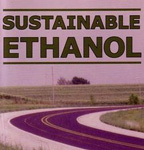Well, it looks like Iowans have chosen Illinois Senator Barack Obama and former Arkansas Governor Mike Huckabee as the top vote-getters in the Democratic and Republican caucuses in the Hawkeye State.
While there’s still a lot of election left to go with all of the rest of the country’s primaries and caucuses still up for grabs, Iowa is many times seen as a bellwether for the presidential contest. With that in mind, I’d like to draw your attention to Obama’s and Huckabee’s renewable energy stances from their campaign web sites.
From Obama:
 Support Next Generation Biofuels
Support Next Generation Biofuels
* Deploy Cellulosic Ethanol: Obama will invest federal resources, including tax incentives, cash prizes and government contracts into developing the most promising technologies with the goal of getting the first two billion gallons of cellulosic ethanol into the system by 2013.
* Expand Locally-Owned Biofuel Refineries: Less than 10 percent of new ethanol production today is from farmer-owned refineries. New ethanol refineries help jumpstart rural economies. Obama will create a number of incentives for local communities to invest in their biofuels refineries.
* Establish a National Low Carbon Fuel Standard: Barack Obama will establish a National Low Carbon Fuel Standard to speed the introduction of low-carbon non-petroleum fuels. The standard requires fuels suppliers to reduce the carbon their fuel emits by ten percent by 2020.
* Increase Renewable Fuel Standard: Obama will require 36 billion gallons of renewable fuels to be included in the fuel supply by 2022 and will increase that to at least 60 billion gallons of advanced biofuels like cellulosic ethanol by 2030.
And from Huckabee:
 We have to explore, we have to conserve, and we have to pursue all avenues of alternative energy: nuclear, wind, solar, hydrogen, clean coal, biodiesel, and biomass. Some will come from our farms and some will come from our laboratories. Dwindling supplies and increasing demand from newly-industrialized countries of fossil fuels are driving up prices. These price increases will facilitate innovation and the opportunity for independence. We will remove red tape that slows innovation. We will set aside a federal research and development budget that will be matched by the private sector to seek the best new products in alternative fuels. Our free market will sort out what makes the most sense economically and will reward consumer preferences.
We have to explore, we have to conserve, and we have to pursue all avenues of alternative energy: nuclear, wind, solar, hydrogen, clean coal, biodiesel, and biomass. Some will come from our farms and some will come from our laboratories. Dwindling supplies and increasing demand from newly-industrialized countries of fossil fuels are driving up prices. These price increases will facilitate innovation and the opportunity for independence. We will remove red tape that slows innovation. We will set aside a federal research and development budget that will be matched by the private sector to seek the best new products in alternative fuels. Our free market will sort out what makes the most sense economically and will reward consumer preferences.
Let me reiterate, it’s still early in the election cycle. In addition, not everyone who has won Iowa has gone on to win the presidency, including Bill Clinton in 1992 (remember the Comeback Kid in New Hampshire). Plus, no one is exactly running away with the race at this point as the winners garnered only about a third of the caucus goers. What I am doing is encouraging each of you to check out all of the candidates and see where they stand on renewable fuels. Then, make sure you vote for who you think is best for all of our futures.
 SolarCity says it is committed to educating youth about solar energy. That commitment seems to stand as the company plans to install its 100th solar learning station in California.
SolarCity says it is committed to educating youth about solar energy. That commitment seems to stand as the company plans to install its 100th solar learning station in California.

 A new poll shows that three-quarters of Kansans who were surveyed prefer the expanded use of wind energy, as opposed to more conventional coal-fired power plants.
A new poll shows that three-quarters of Kansans who were surveyed prefer the expanded use of wind energy, as opposed to more conventional coal-fired power plants. Missouri Governor Matt Blunt has unveiled a plan to provide $2 million in tax incentives to fuel retailers who install E-85 ethanol pumps.
Missouri Governor Matt Blunt has unveiled a plan to provide $2 million in tax incentives to fuel retailers who install E-85 ethanol pumps.  Utah biodiesel maker Better Biodiesel has announced it will buy GeoAlgae Technologies (GAT). The Arizona-based GAT makes inexpensive feedstock for the production of biodiesel.
Utah biodiesel maker Better Biodiesel has announced it will buy GeoAlgae Technologies (GAT). The Arizona-based GAT makes inexpensive feedstock for the production of biodiesel. The centerpiece of the Pennsylvania Farm Show will be turned into green energy.
The centerpiece of the Pennsylvania Farm Show will be turned into green energy. Support Next Generation Biofuels
Support Next Generation Biofuels We have to explore, we have to conserve, and we have to pursue all avenues of alternative energy: nuclear, wind, solar, hydrogen, clean coal, biodiesel, and biomass. Some will come from our farms and some will come from our laboratories. Dwindling supplies and increasing demand from newly-industrialized countries of fossil fuels are driving up prices. These price increases will facilitate innovation and the opportunity for independence. We will remove red tape that slows innovation. We will set aside a federal research and development budget that will be matched by the private sector to seek the best new products in alternative fuels. Our free market will sort out what makes the most sense economically and will reward consumer preferences.
We have to explore, we have to conserve, and we have to pursue all avenues of alternative energy: nuclear, wind, solar, hydrogen, clean coal, biodiesel, and biomass. Some will come from our farms and some will come from our laboratories. Dwindling supplies and increasing demand from newly-industrialized countries of fossil fuels are driving up prices. These price increases will facilitate innovation and the opportunity for independence. We will remove red tape that slows innovation. We will set aside a federal research and development budget that will be matched by the private sector to seek the best new products in alternative fuels. Our free market will sort out what makes the most sense economically and will reward consumer preferences. The biggest biodiesel producer on the U.S. West Coast has withdrawn a plan to have an initial public offering (IPO) that could have raised more than $345 million for several biodiesel plants across the country.
The biggest biodiesel producer on the U.S. West Coast has withdrawn a plan to have an initial public offering (IPO) that could have raised more than $345 million for several biodiesel plants across the country. Two brothers with plant and environmental science backgrounds have just released a new book about the “past, present, and future of ethanol fuel.”
Two brothers with plant and environmental science backgrounds have just released a new book about the “past, present, and future of ethanol fuel.”
 New proposed motor fuel rules for Florida could be just the ticket to boost ethanol blends in the country’s third largest gasoline market.
New proposed motor fuel rules for Florida could be just the ticket to boost ethanol blends in the country’s third largest gasoline market.